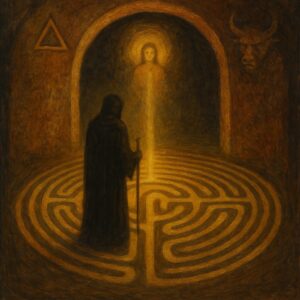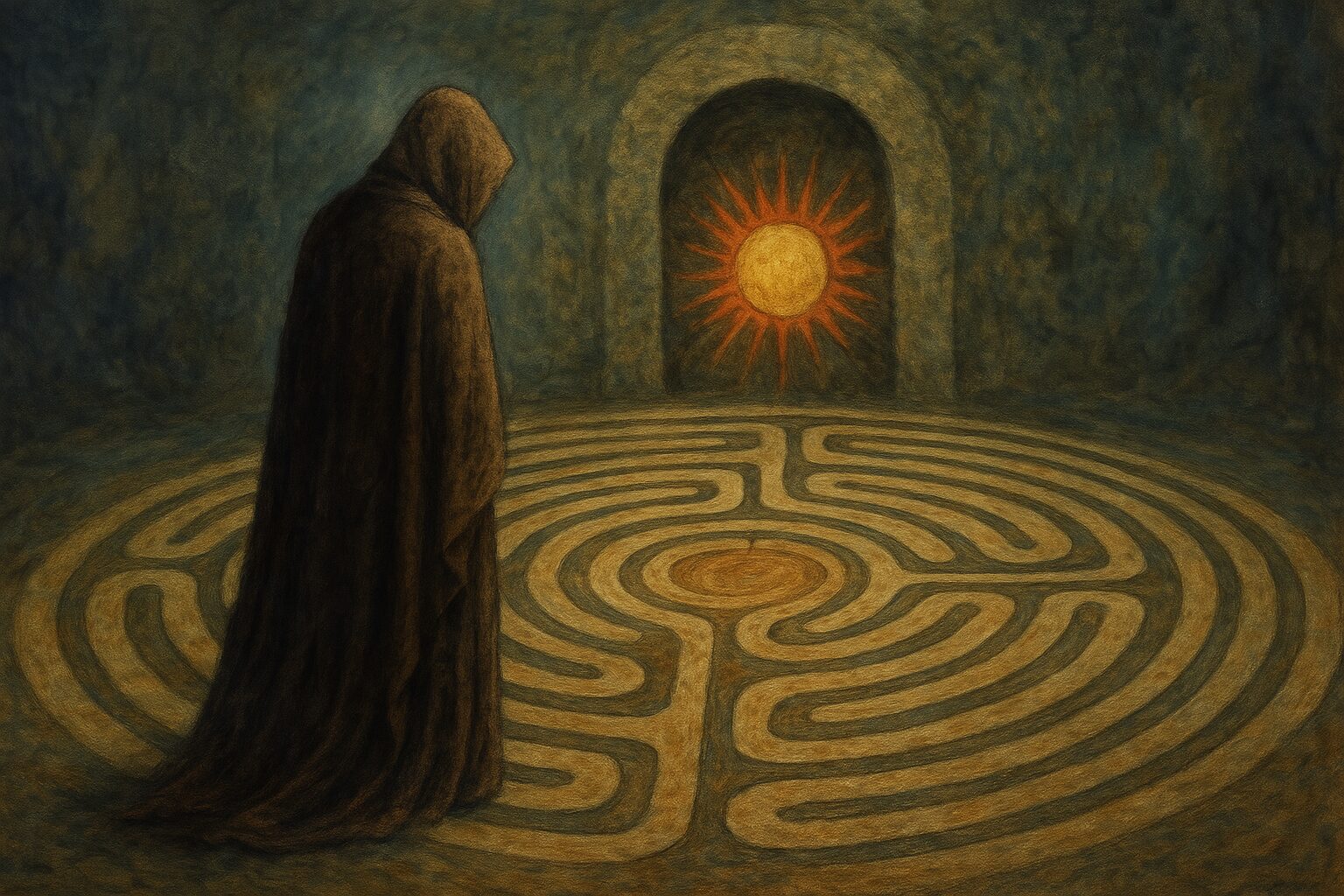“The path is not straight. It bends, loops, folds back upon itself. But each twist has its meaning. Each step is the Work.”
The Labyrinth in Myth and Symbol
The image of the labyrinth has haunted the human imagination for millennia. From the Minoan ruins of Knossos to the medieval stone floors of Gothic cathedrals, it has symbolized mystery, initiation, and the sacred spiral inward.
Unlike a maze, the labyrinth has no false paths. There is only one way in and one way out. It invites us not to solve it, but to surrender to it — to walk deliberately, reflectively, in trust that the path itself is the teaching.
In Greek myth, it was Daedalus who crafted the labyrinth, and it was Theseus who entered it to confront the Minotaur. But what if these were not merely outer characters? What if Daedalus is the architect of the psyche, Theseus the conscious ego, and the Minotaur the shadow self — the primal, wounded aspects we bury in our depths?

Daedalus, the Minotaur, and the Self
The Minotaur, half-man, half-beast, was born of unnatural union — the consequence of repressed desire and broken order. We, too, hide such creatures within: our rage, our shame, our fear. And just like Theseus, we must enter the dark spiral not with sword alone, but with Ariadne’s thread — the thread of remembrance, intuition, and love.
The journey through the labyrinth becomes a confrontation with the very parts of ourselves we would rather leave unseen. But the great teachings remind us: what is rejected becomes the tyrant. What is integrated becomes the guardian of wisdom.
The Alchemical Stages as Inner Navigation
In Hermetic and alchemical traditions, the journey inward is marked by stages: Nigredo, Albedo, and Rubedo — Blackening, Whitening, and Reddening.
- Nigredo is descent — the confrontation with the shadow, the dissolution of identity, the death of illusions.
- Albedo is purification — a kind of spiritual washing, where clarity and light begin to re-emerge.
- Rubedo is the completion — the union of opposites, the birth of the Philosopher’s Stone, the self-realized soul.
These are not abstract metaphors. They are lived stages — through grief, insight, and ecstatic stillness — the transmutation of inner lead into gold.
Jung and the Individuation Process
Carl Jung drew deeply from alchemical sources, recognizing the labyrinthine process as the journey of individuation — the integration of the conscious and unconscious into a unified Self.
In this view, the labyrinth is the psyche. Each turn is a confrontation with archetypes: the Child, the Shadow, the Anima/Animus, the Wise Old Man. We are called to walk through our own dreams, wounds, and patterns — not to escape them, but to integrate them.
It is not enough to “slay the Minotaur.” One must mourn it, honor it, understand why it was placed there in the first place.
Walking the Path: Daily Practices for Inner Work
How can we live the labyrinth in our everyday lives? Here are some initiatic practices:
- Journaling as a mirror – Record your dreams, intuitions, triggers. What patterns emerge?
- Meditative walks – Find or draw a labyrinth. Walk it slowly, with a question or prayer in your heart.
- Symbolic art – Let your subconscious speak through drawings, poetry, or collage. What are your inner images?
- Shadow dialogues – Write as the “Minotaur.” What does it want? What does it guard?
- Ritual silence – Once a week, choose silence for several hours. Let the inner voices speak.
Each step on this winding path brings us deeper — not into confusion, but into coherence. We return not the same, but more whole.
In the end, the labyrinth is not meant to trap us. It is meant to initiate us — into mystery, into truth, into the luminous self that waits at the center of all things.
